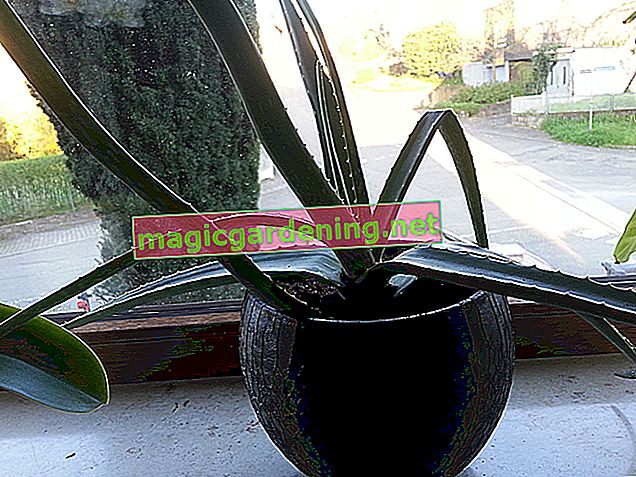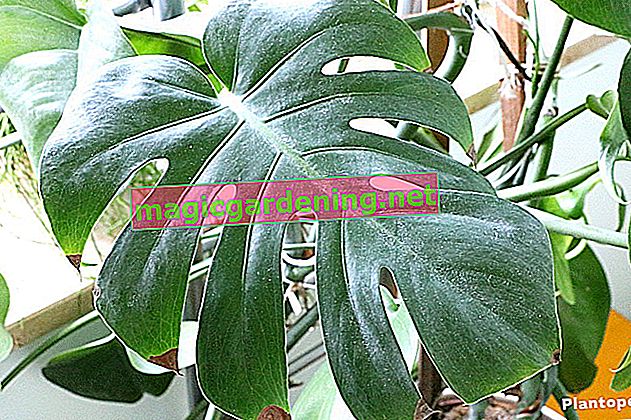
origin
With 180 species, the genus Mammillaria belongs to the cactus family. Their name suggests the warty structure of the shoots. A distribution center of the genus extends over Mexico. Mammillaria species occur in the southwest of the USA, in Venezuela and Colombia. Some representatives have discovered niches for themselves on the Caribbean islands.
also read
- Caring for Mammillaria properly - tips for care
- How many species are there of Mammillaria?
- Rhipsalis: features and care of indoor cacti
growth
The succulent plants develop elongated to spherical growth forms. Their shoots stand individually upright or develop side shoots that give the cactus a cushioned shape. In contrast to other cacti, Mammillaria species develop warts instead of the typical ribs that litter the surface. A clear identification of the species is possible based on the number of warts. Woolly hair or bristles may sit in the depressions between the warts. In some species these areas are completely bare.
leaves
Significantly reduced leaves are typical of cactus plants. They appear as thorns, the shape and number of which differ depending on the species. They can appear straight or curved. Some of the thorns are reminiscent of the shape of a hook. These reduced leaves arise on the warts. They can appear smooth or rough to finely haired, coarse and bristly or soft hair-like.
Thorns are useful structures:
- protect against excessive evaporation
- make it difficult for animals to eat parts of plants
- repel direct sun rays
blossom
Mammillaria cacti develop lateral flowers that arise in the older wart spaces. They are hermaphroditic and can be tubular, bell-shaped or wheel-shaped. In some species, the flowers reach a diameter between four and seven centimeters.
The succulent plants develop flowers with numerous bracts that shine in a wide variety of colors. Their spectrum ranges from white to yellow to different shades of red. The blossoms show up from spring to autumn.
fruit
When the flowers have wilted, the fruits are pushed out on the wart spaces. The green or red fruits are only visible when they are fully ripe. The yellowish to black seeds are surrounded by a juicy pod.
use
Mammillaria species are grown in pots. They beautify greenhouses (€ 34.95 at Amazon *) and as robust and easy-care cacti are also suitable for beginners in succulent cultivation. The prickly plants feel good on the windowsill.
Which location is suitable?
Mammillaries feel particularly comfortable in full sun. Green species are an exception, because they prefer a bright location without direct sunlight. Warm temperatures between 20 and 24 degrees Celsius promote healthy growth. When exposed to the sun all year round, the cacti develop aesthetically colored thorns. The flowers show themselves in lush splendor when there is sufficient light.
During the summer months, the succulent plants enjoy an outdoor location. If you don't have the opportunity to cultivate outdoors, you can easily place mammillaries in the room. They like a seat on the south-facing windowsill. Avoid frequent changes of location, as the plant is sensitive to the changing conditions.
What soil does the plant need?
A suitable substrate consists of one part sharp-grain sand and two parts compost. As an alternative to sand, you can use perlite. Pumice and lava rock improve the permeability and increase the mineral content in the substrate. Make sure that the mixture is lime-free, as the plants cannot tolerate lime. Special soils for cacti and succulents are optimally tailored to the requirements of the plants. They provide them with all the important substances.
Substrate properties:
- pH in acidic or neutral range
- good nutrient availability
- coarse structure for high water permeability
Mammillaria multiply
Some species develop young plants at their base, which can be used for vegetative reproduction. These children are fully developed and have enough roots of their own to be able to survive on their own.
Separate the child from the mother plant with a sharp knife and let the wound dry for two to three days. Put the young plant with the cut surface in a pot with fresh substrate. Species that do not develop Kindel can be propagated via seeds.
sowing
When berries appear on the cacti in autumn, you can pick them for seed production. Press the fruit pulp with the seeds onto an absorbent cloth and let the pulp air dry for a few days. Collect the seeds and store them in a cool and dry place until next spring sown.
Mammillaria in the pot
The cultivation of the mammillaria takes place in the pot. Species that tend to form groups due to side shoots are planted in a wide bowl. Here the plants can spread unhindered. Species that grow stiffly upright and develop few or no side shoots feel comfortable in a deep planter. A cactus five centimeters in diameter needs a pot ten centimeters in diameter.
balcony
During the warm summer months, mammillaries enjoy a sunny spot on the balcony. Gradually get the plant used to the outside temperatures. A sudden change of location from the living room to the balcony can cause damage. The shoots must develop a protective layer against UV radiation in order not to burn. Damage caused by excessive exposure to the sun shows up as irregular brown spots.
How to re-accustom mammillaries:
- Place in a shady place outside for one to two weeks
- Morning and evening sun does not harm the plants
- then put in the final location in the sun
Water Mammillaria
The water requirement of mammillaries is moderate. As succulent plants, they store water in the fleshy, thickened shoots. During the growth phase between spring and autumn, the cacti enjoy regular watering. Give the plants fresh water as soon as the top soil layer has dried out.
Make sure you water it sparingly to avoid waterlogging. The robust plants survive dry periods without any problems. They will forgive you if you should forget to water. During the winter months, the substrate should not dry out.
How to pour properly:
- at the base of the plant
- alternatively, place the pot in a bowl filled with water
- Remove the planter as soon as the upper layer of soil appears damp
- Allow excess water to drain off.
Fertilize Mammillaria properly
When the cacti are growing, they need a complete fertilizer rich in potash every four weeks. You can use a cactus fertilizer, because this provides the plants with important nutrients. It is fertilized until autumn. Then completely stop the nutrient supply.
How do I transplant properly?
As soon as the succulents have completely rooted the substrate and the first roots are growing out of the drain holes, you should transplant your Mammillaria. The ideal time for this measure is early spring, before the new growing season starts. Use cucumber tongs to grip it so that you do not injure yourself on the prickly thorns. Particular caution is required with mammillaries with hook-shaped thorns. Once the hooks are anchored in the skin, they are difficult to remove without damaging the delicate warts.
Completely remove the old substrate from the root ball. You can gently shake and tap the plant to loosen any debris. Fill a larger planter with fresh substrate and place the cactus in the middle of the ground. Fill in the gaps and water the plant.
Overwinter
The cacti need a rest period of at least 16 weeks for them to develop flowers. Winter is perfect for the break you need. Place the planter in a cool room with temperatures between six and ten degrees Celsius. If the plants are overwintered at room temperature, they will continue to grow and require more water than when they are resting. Under these conditions there will be no flowering in the next year.
Frost-free cellars and garages with north-facing windows are suitable as winter quarters. Since the plants need light even in winter, you should hang up plant lamps in dark rooms. Fluorescent tubes are also suitable. Make sure there is a distance of 20 centimeters between the light source and the plant.
Pests
Mammillaries are considered robust plants that are rarely attacked by pests. The most common unwanted guests include mealybugs and spider mites.
Mealybug
These pests are often seen on mammillaries. They leave behind flaky excretions that are reminiscent of cotton balls. If the infestation is very advanced, the affected plants show growth disorders. You can combat a pest infestation with beneficial insects such as ladybirds, parasitic wasps (14.59 € on Amazon *) and bed bugs. The thorns make it difficult to get rid of the lice. For targeted control, you can spray the plant with oil-based preparations. Severely affected and visibly weakened shoots should be cut off.
Spider mites
These pests appear as light dots on the parts of the plant. They damage the plant so that the shoots are covered with light gray spots after a strong infestation. Spray solutions with rapeseed oil fight the insects. The oil film traps the spider mites so that they suffocate. Predatory mites, ground beetles and predatory bugs are considered natural enemies of the pests.
Tips
Mammillaries awaken the passion for collecting. Combine different flowering species in a disused aquarium. In combination with figures you create a miniature desert world.
sorts
- Mammillaria vetula: Abundantly sprouting, spherical shoots, gray-green. Flowers lemon yellow, up to 18 millimeters. Fruits whitish-yellow. Up to ten centimeters tall.
- Mammillaria elongata: elongated shoots, cylindrical. Whitish to golden yellow thorns. Flowers pink to pale yellow, later red.
- Mammillaria spinosissima: Cylindrical habit, blue-green. Thorn thick. Outer petals brownish with a pink border, inner leaves carmine red. Up to 30 centimeters high and seven centimeters wide.








